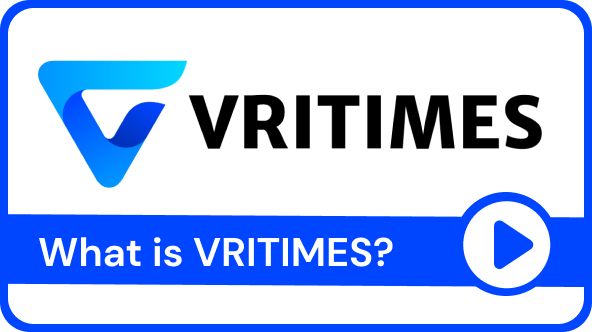/ Understanding Treasure Fun and TreasureNFT: The Concerning Side of Potential Scam
Understanding Treasure Fun and TreasureNFT: The Concerning Side of Potential Scam
The world of digital assets and NFTs is constantly evolving, blending blockchain technology with novel applications like gamification, AI-powered trading, and community engagement.
Amid this innovation, a term has emerged with growing controversy: “Treasure Fun.” This phrase is used in two very different contexts—one describing a legitimate gamified NFT concept, the other a suspected scam tied to a rebranded platform.
This comprehensive article aims to clarify both meanings of Treasure Fun, explore its connections to TreasureNFT, and equip readers with tools to distinguish between innovation and deception.
From TreasureNFT to Treasure Fun
The problematic version of Treasure Fun refers to a platform that has rebranded from the original project known as TreasureNFT (treasurenft.xyz). It now operates under the domain treasurefun.online, offering enticing promises of passive income via algorithmic trading bots and exclusive NFTs. However, investigations and user reports raise serious concerns:
Major Red Flags:
1. Rebranded Platform: The switch from TreasureNFT to Treasure Fun came with the introduction of a new token, TUFT, which lacks intrinsic value.
2. Withdrawal “Traps”: Users have reported being unable to withdraw funds, instead being asked to deposit more money (e.g., $50 for additional TUFT) before proceeding.
3. Ponzi-Like Behavior: The system reportedly relies on new users' deposits to pay existing users, a hallmark of Ponzi schemes.
4. Too-Good-to-Be-True Returns: Promised ROI ranges from 1.8% to 4.65% daily, which can exceed 1,500% annually—an unsustainable and suspicious offer.
5. Lack of Transparency: There is no verifiable development team, no published roadmap, and minimal technical documentation.
These characteristics suggest that Treasure Fun (formerly TreasureNFT) may be operating as a high-yield investment scam, not a legitimate digital asset platform.
The Legitimate Concept: Treasure Fun as a Gamified NFT Experience
On the flip side, “Treasure Fun Treasure NFT” also refers to a genuine and innovative model within the NFT ecosystem. Here, the concept is about turning NFT collecting into an interactive adventure—blending treasure hunting with gamification.
Key Features of Legitimate Treasure Fun NFT Projects:
1. Quest-Based Gameplay: Users solve puzzles or complete tasks to uncover rare NFTs.
2. Augmented/Virtual Reality Integration: Projects often utilize AR or VR to enhance immersion.
3. Community Collaboration: Participants engage with each other to uncover clues and share rewards.
4. Decentralization and Transparency: Blockchain-based systems allow public verification of ownership and actions.
Examples include Treasure DAO and platforms like market.treasure.lol, which leverage this model for community-driven NFT discovery and engagement.
TreasureFun vs TreasureNFT: A Critical Comparison
Here’s the difference between TreasureFun and TreasureNFT:
Verdict: TreasureFun (treasurefun.online) appears far more dangerous and potentially fraudulent than TreasureNFT, which operates like a typical Web3 NFT marketplace but still lacks complete transparency.
How to Identify a Legitimate “Treasure Fun Treasure NFT” Project
To protect yourself, follow these best practices when exploring gamified NFT platforms:
1. Verify Official Sources: Only trust links from verified websites and social media (look for badges). Example: Treasure DAO's Twitter – @Treasure_DAO and site treasure.lol.
2. Check Team Credentials: Legitimate projects publish team bios, LinkedIn profiles, and a whitepaper. Scams often feature anonymous or fake identities.
3. Avoid Unrealistic Returns: No legitimate project will guarantee fixed daily profits. ROI should be tied to user participation and NFT utility.
4. Evaluate Community Engagement: Real communities are active and organic. Be wary of spammy or scripted reviews and empty Discord servers.
5. Use Blockchain Explorers: Platforms like Etherscan or Arbiscan can help you verify NFT authenticity and token smart contracts.
6. Test Withdrawals First: Always test a small withdrawal before committing larger funds. Platforms that block or delay withdrawals are major red flags.
Treasure Meta and Its Role
Another important piece of the puzzle is the connection to TreasureMeta Technology Inc., the original developer of TreasureNFT. The app was listed under “TREASUREMETA CORPORATION,” and its shutdown amid controversy—including non-withdrawal complaints and scam accusations—confirms the entity behind the platform’s downfall.
Despite its original promises of AI-powered NFT trading and fractional ownership, TreasureNFT collapsed under the weight of its unsustainable business model, leading to its rebranding as TreasureFun.
The Problem of Fake Accounts and Referral Code Confusion
Due to the generic term “Treasure,” many users also encounter fake X (Twitter) accounts, phishing websites, and fraudulent referral codes. Always:
1. Double-check usernames (e.g., @Treasure_DAO vs. @TreasureNFT_).
2. Verify links on the official site: https://treasure.lol
3. Never connect your wallet to untrusted or unofficial platforms.
Conclusion: Innovation vs. Imitation
The rise of gamified NFT platforms represents a promising direction for Web3, emphasizing creativity, community, and utility. However, the similar-sounding names and marketing tactics of fraudulent projects like TreasureFun (formerly TreasureNFT) attempt to mislead users and exploit legitimate buzz.
Remember:
1. “Treasure Fun” as a game concept is legit.
2. “Treasure Fun” as a rebranded high-yield scheme is not.
Always DYOR (Do Your Own Research), test small, and verify authenticity on the blockchain.
In this volatile space, informed decision-making is your best protection—and your best tool for uncovering genuine treasures in the world of NFTs.







